Art & Exhibitions
An Innovative Fashion Exhibition at de Young Museum Will Get an A.R. Boost From Snap
The Fine Arts Museums of San Francisco is the latest institution to partner with the tech company.
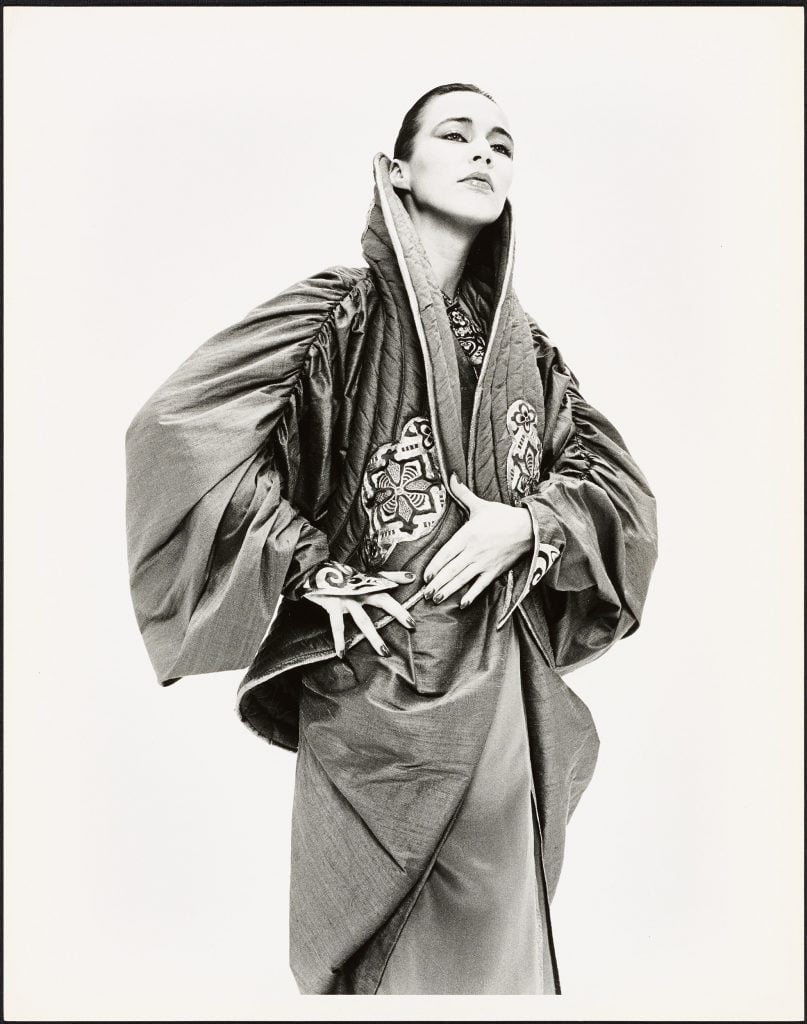
The Fine Arts Museums of San Francisco is the latest institution to partner with the tech company.

Min Chen

In January 2024, when “Fashioning San Francisco: A Century of Style” opens at the de Young Museum, visitors won’t just be viewing a major showcase of historic garments by more than 50 designers. They’ll also get to try these outfits on—not literally, but virtually.
In collaboration with Snap Inc, which is behind Snapchat, the museum will be rolling out an interactive try-on installation that deploys the tech company’s augmented reality mirrors. The booth invites visitors to view an image of themselves in a large screen, virtually dressed in their choice of three evening wear ensembles—by French designer Yves Saint Laurent, Italian couturier Valentino, and Bay Area-based clothing artist Kaisik Wong. Snap’s technology will further configure the garments to fit different sizes, shapes, and genders.
“We’re excited to democratize fashion by giving attendees the opportunity to try on timeless fashion they otherwise might never be able to with the help of augmented reality,” Rajni Jacques, Snap Inc’s global head of fashion and beauty, said in an email.
The installation, said curator Laura L. Camerlengo over email, “offers the rare opportunity for visitors to participate in the exhibition and write themselves into the show, so to speak, by virtually trying on iconic ensembles and gowns from the collection.”
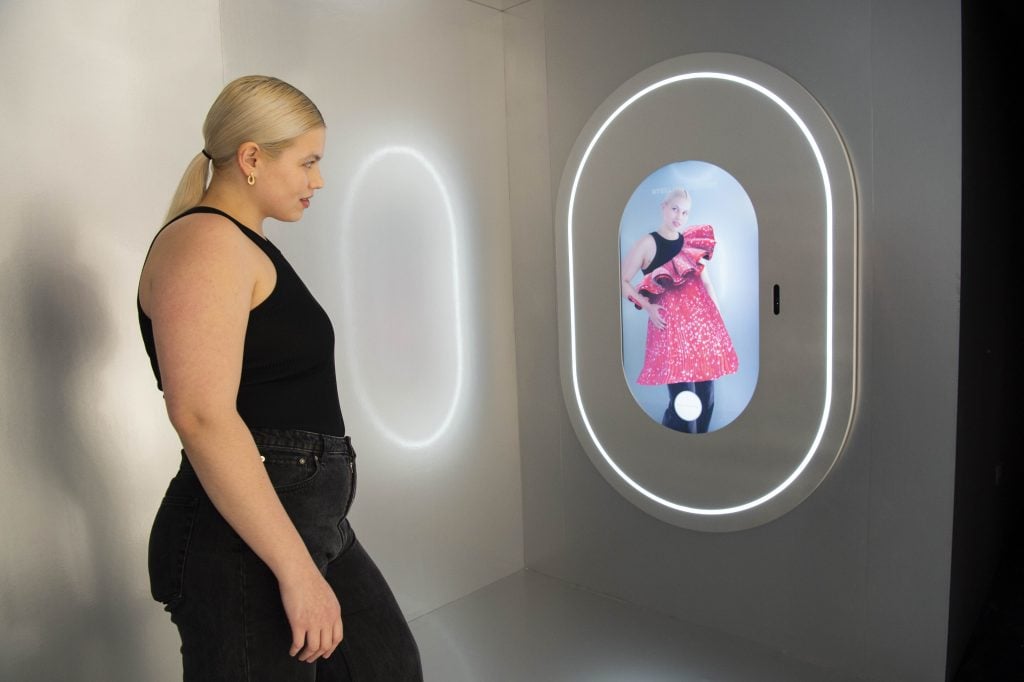
The augmented reality mirror by Snap Inc. Photo courtesy of Snap Inc.
In development for more than a decade, “Fashioning San Francisco” will trace the sartorial history of the city, exploring how style has been entwined with the Bay Area’s social identity over the past century. The show raids the collection of the Fine Arts Museums of San Francisco (FAMSF), the umbrella organization that oversees the de Young, surfacing pieces from early 20th-century haute couture to contemporary dress—a number of them historic donations by Bay Area women philanthropists.
Fashions on view will include early French evening wear by Callot Sœurs and Lucile, luxurious pieces by European couturiers such as Christian Dior and Pierre Balmain, little black dresses by Karl Lagerfeld and Oscar de la Renta, and experimental pieces by Japanese creatives from Rei Kawakubo to Yohji Yamamoto. These designs will be arrayed alongside the story of San Francisco’s revival, in the wake of the great 1906 earthquake, into a thriving metropolis.
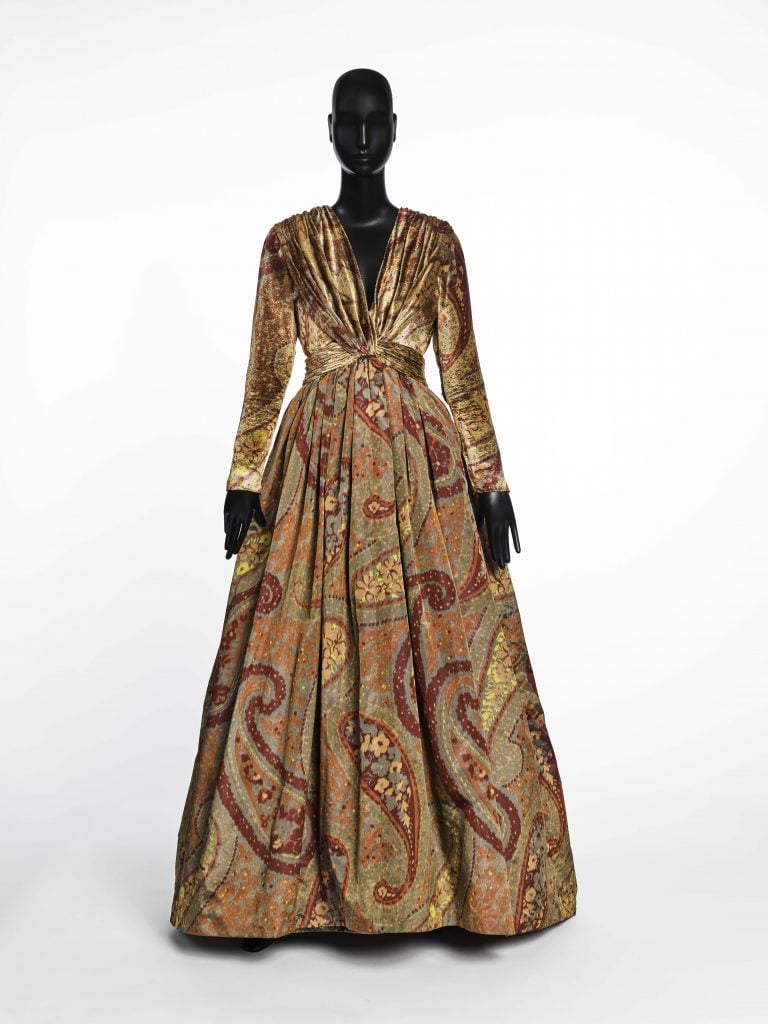
Valentino Garavani, Evening gown (1987). Photo: Randy Dodson, courtesy of the Fine Arts Museums of San Francisco.
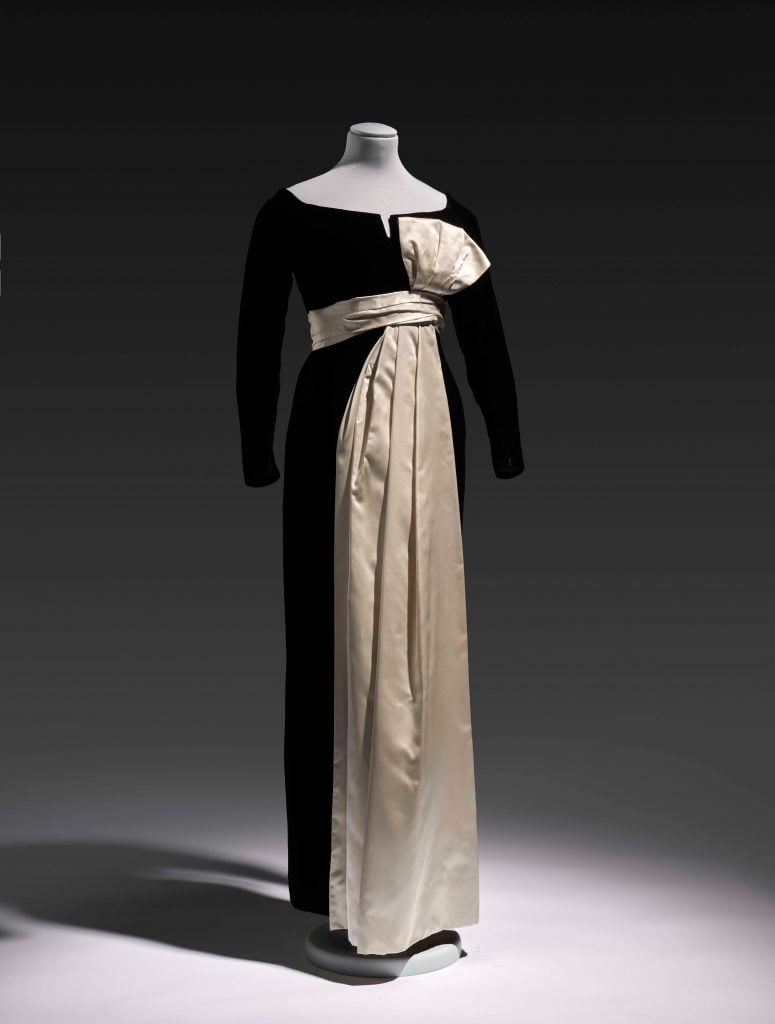
Yves Saint Laurent, Evening ensemble: blouse and skirt (Fall/Winter 1976–77 Haute Couture). Photo: Randy Dodson, courtesy of the Fine Arts Museums of San Francisco.
“Traditional fashion histories have celebrated the so-called ‘major’ fashion cities—Paris, London, Milan, and New York,” said Camerlengo. “I enjoyed learning about how San Francisco’s sartorial histories—whether those of local fashion designers such as Richard Tam and Kaisik Wong, or retailers—were and still are major players in the national and international fashion landscapes.”
She pointed to how haute couture took root in the city early in the 1900s. It happened not just as a result of San Francisco women buying such pieces in luxury department stores, but because of exclusive trade agreements between the city’s manufacturers and France’s Fédération de la Haute Couture et de la Mode. At the local level, she added, “our vibrant philanthropic sector encouraged the wear of couture to high-profile events, driving sales.”
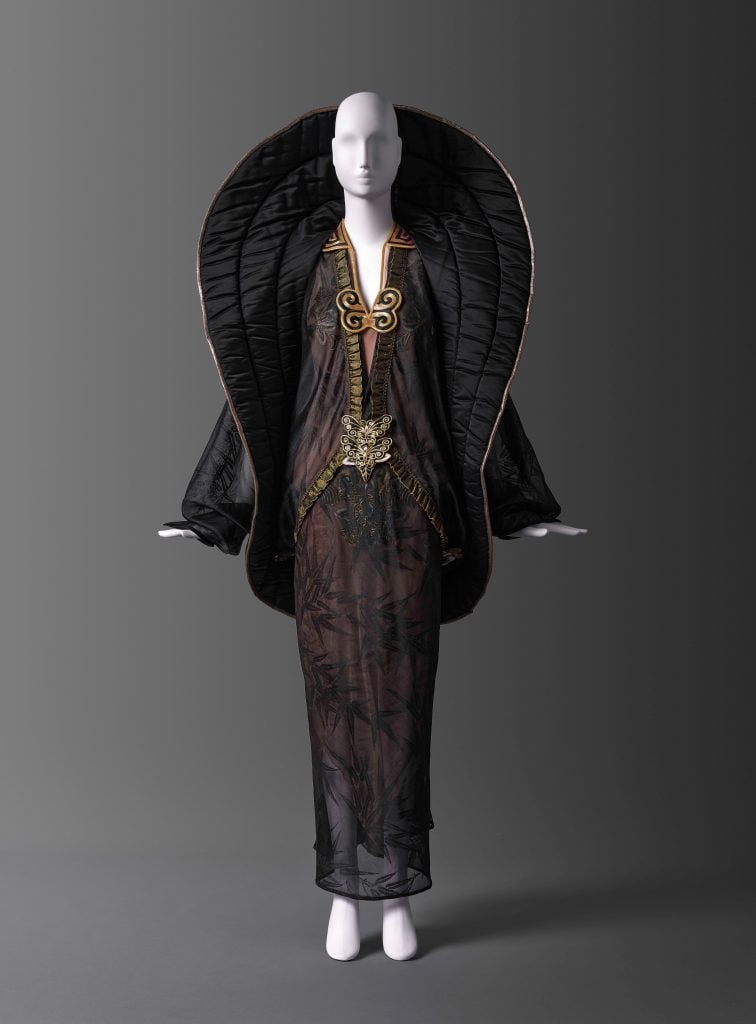
Kaisik Wong, Evening ensemble (1985). Photo: Randy Dodson, courtesy of the Fine Arts Museums of San Francisco.
To build the A.R. experience around the exhibition, the FAMSF digital and curatorial teams worked closely with Snap to capture the content of the three outfits. 3D versions of the looks will then be animated and loaded into the A.R. mirror, which will be designed alongside the de Young with bespoke elements. “The ultimate goal,” said Jacques, “is to stay true to the designs themselves, preserving their history as much as possible.”
The show will mark the U.S. museum debut of Snap’s A.R. mirrors, which, so far, have largely been adopted by retailers such as Nike. It also adds FAMSF to the tech company’s growing cadre of cultural partners—joining the likes of LACMA, which collaborated with Snap’s A.R. studio for its multi-part Monumental Perspectives project, and the Louvre, which just launched its Egypt Augmented program enabled by the company’s A.R. technology.
“’Fashioning San Francisco’ chronicles the ways in which style in the Bay has evolved over generations,” said Thomas P. Campbell, CEO and director of FAMSF, in a statement. “Thanks to Snap’s augmented reality mirrors, our visitors will have the opportunity to visualize themselves as a part of this history and to imagine their role in charting the city’s next sartorial chapter.”
“Fashioning San Francisco: A Century of Style” will be on view at the de Young Museum, 50 Hagiwara Tea Garden Drive, San Francisco, California, from January 20 through August 11, 2024.
More Trending Stories:
Conservators Find a ‘Monstrous Figure’ Hidden in an 18th-Century Joshua Reynolds Painting
A First-Class Dinner Menu Salvaged From the Titanic Makes Waves at Auction
The Louvre Seeks Donations to Stop an American Museum From Acquiring a French Masterpiece
Meet the Woman Behind ‘Weird Medieval Guys,’ the Internet Hit Mining Odd Art From the Middle Ages
A Golden Rothko Shines at Christie’s as Passion for Abstract Expressionism Endures
Agnes Martin Is the Quiet Star of the New York Sales. Here’s Why $18.7 Million Is Still a Bargain
Mega Collector Joseph Lau Shoots Down Rumors That His Wife Lost Him Billions in Bad Investments